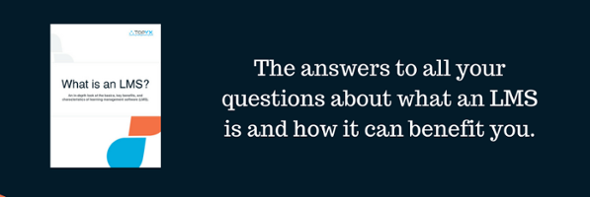The average employee is productive a mere three hours per day.1 This lack of efficiency occurs for a variety of reasons. Here are a few examples:
- Employee training is not customized to individual job roles.
- New hires have unanswered questions that hinder their productivity over the long haul.
- Corporate training does not directly address workers’ areas of inefficiency.
By making a few tweaks to your corporate training program, you can boost employee efficiency and hopefully increase the number of hours staff are productive during the workday.

3 Corporate Training Program Hacks that Will Increase Worker Efficiency
1. Proactively answer new hires’ questions through video
New hires usually have a lot of questions, and the more they learn during onboarding, the more questions arise. If these queries are never answered properly, new hires will use inefficient processes throughout their time with your company. You can proactively answer these questions and make training more effective by including video-based learning in onboarding courses.
"The amount of information that a new hire can face is often overwhelming,” wrote a contributor to Forbes.2 “Businesses can prevent cognitive overload by identifying in advance all of the most likely questions a new hire will have, and then recording simple video responses to those questions from key members of the team. These videos can become an always ready, digital coaching resource that provides solutions as they are needed."
Videos should be introduced early on in a new hire's learning path and sprinkled throughout it. To do this correctly, administrators would have to anticipate which questions would probably arise at what points in the onboarding process and then appropriately place the videos throughout the learning path. They could study employee surveys to determine what questions are the most common, as well as the most pressing. Employee training software offers learning path features.
Make videos available after training as well. Most employees won’t retain every piece of information the first time around, so questions will likely arise again while employees are on the job. By making videos available throughout an employee’s tenure with your company, you make it easy for staff to revisit videos and training to answer questions that come up while they’re working. Most online training software includes a resource repository where you can house videos by category or job function to make them readily accessible.
2. Identify areas of inefficiency and design courses that resolve the problem
By pinpointing where employees are most inefficient, companies can create online courses that impart the skills needed to improve productivity. For example, one area of significant inefficiency for many companies is internal communications. “A business with 100 employees spends an average downtime of 17 hours a week clarifying communications, translating to an annual cost of $528,443,” stated LinkedIn.3
If your company has hundreds or thousands of employees, organizational leaders might be spending large chunks of time trying to fix communication problems. To solve issues related to internal communications, your organization could design an online course that ensures learners know how to properly use technology that streamlines communication, such as an eLearning system, a project management system, and communication-promoting apps such as Microsoft Lync. You can also create courses on effective corporate communication methods for your communications staff to alleviate the problem at its source.
Courses can be created to address any area of organizational inefficiency and would ideally correct these issues by closing knowledge gaps that are contributing to the problem.
3. Individualize training for job titles and departments
Some employees are inefficient because their training needs aren’t being met, which causes misunderstandings and low productivity. That’s why it’s helpful to individualize training for learners.
Large businesses may struggle to individualize training as it isn't sustainable for them to create courses for every individual. These companies can create courses for job titles or departments instead of individual employees. For example, marketing employees should be given a different onboarding course than sales or operations employees. The same is true for leadership or management training. Management in general has common characteristics, but an operations manager and a sales manager will encounter different challenges, so training for those positions would, ideally, be customized.
To create content that is useful for employees in every department, your L&D team should work directly with department leaders and staff to ensure they're including the right material and resources in each corporate training program course.
Your Corporate Training Program Can Drive Engagement
In addition to ineffective training, disengagement is often to blame for employee inefficiency. For example, most workers spend an hour a day reading news articles, 45 minutes checking social media, and 40 minutes chatting with co-workers on the job4 - all elements that indicate employees are disengaged and demonstrating just how much time the average employee wastes every day.
By optimizing your corporate training program in the ways mentioned earlier, you’ll simultaneously increase employee engagement and efficiency, improving the productivity of your workforce and success of your business.
Want to learn a few best practices for creating a best-in-class corporate training program? Take a look at these six tips.
References:
1, 4. Inc.com. In an 8-hour day, the average worker is productive for this many hours. https://www.inc.com/melanie-curtin/in-an-8-hour-day-the-average-worker-is-productive-for-this-many-hours.html.
2. Forbes. Council Post: creative onboarding strategies to set your new hire up for success. https://www.forbes.com/sites/forbescoachescouncil/2018/05/15/creative-onboarding-strategies-to-set-your-new-hire-up-for-success/#1b8acd357fd2.
3. LinkedIn. Four steps to avoid miscommunication. https://www.linkedin.com/pulse/four-steps-avoid-miscommunication-stacey-hanke.








